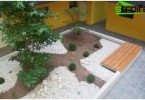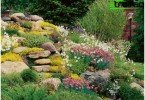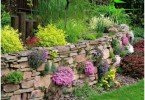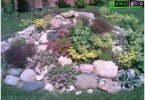How to break a flower garden
Plants and their flowers are always pleasing to our eyes. They adorn every place, whether it is an untouched corner of nature or a multi-million megalopolis. Despite the seasons and the weather, the riot of their lively colors harmonizes us with nature. Therefore, floriculture enjoys such success. Everyone can smash a charming flowerbed on their site. Help in this scheme flower beds from perennials, annual plants, or a combination thereof. You can use ready-made developments or make a plan yourself.
Content
- What type of flower garden is needed
- How to think about the layout of the flowerbed
- How to break a flower garden
- Other important points for planning
- Paperwork completion
What type of flower garden is needed
There are several types of flower beds that differ in the preferred viewing angle, location, organization of flower exposition. The familiar flowerbeds are arranged so that a beautiful view of them opens on either side. Not wide (up to 0.4 m) borders from plants, often undersized, can serve to fence a certain area. Mixborders play the same role, but they consist of several types of flora (low-growing forms land in the background, and tall ones in the far). Rabatki, representing several flower beds, are broken against the walls of buildings or fences. Alpine slides made of stones covered with flowering plants and greens, flower arrangements in containers or arranged in tiers can look great.
Preliminary planning of the flower garden is a prerequisite if you want to get a really decent result. The scheme must be determined before digging the soil and purchasing plant material. This is true even for small flower beds.
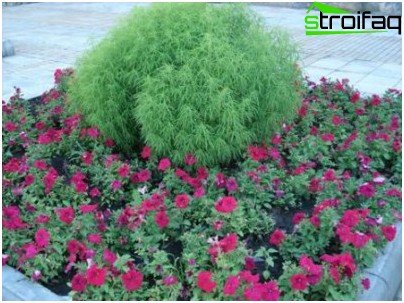
Even inexpensive planting material will create a beautiful flowerbed
Almost every flower garden project provides for zones with a flora of bright, catchy colors. And softening them with calm greens, spots of inflorescences of pastel soft colors. Herbal compositions should attract the attention of observers. Perhaps distract from the contemplation of a boring fence, walls and the like.
How to think about the layout of the flowerbed
First you need to choose a place where the flower garden will be located, to determine its type and style. Based on this, certain plant species can be selected. If you do the planning on your own, you need to learn more about the selected flora. It is easier to use ready-made flower garden schemes available in free Internet access or literature. They can be matched to different environmental conditions and tastes of gardeners. If desired, plant species provided by the schemes can be replaced with similar ones in terms of exterior and scale, flowering period and care conditions.
It is much more difficult, but also more fun, to develop flower garden schemes with your own hands and mind. Some experienced landscape designers recommend applying the “sequential approach” technique for this. That is, to begin with, make more crude estimates, and then make refinements to them. All stages of the development of the scheme must be displayed on paper so as not to forget anything. After a number of corrections and additions, your personal flower garden plan will be ready..
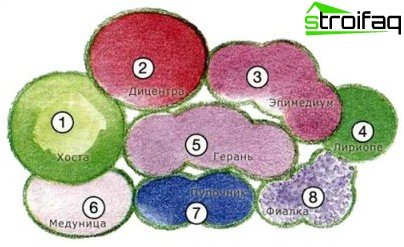
The plan is prepared taking into account the future color scheme of planting
It is better to start your own idea to perfection by studying a few ready-made schemes. After that, while drawing up your own plan, it is advisable to immediately make it on a scale to the real area. Mark light and shaded places on the image of the site, consider the possibility of watering. It’s easier to pick out the types of flowers, ornamental grasses and shrubs..
How to break a flower garden
You need to determine which color scheme is preferred for the selected location. It would be nice to consider the compatibility of colors, especially their perception, the ratio with the design of the surrounding space. At this stage, you can simply determine the main palette, and then adjust it with the selection of vegetation.
Next, start detailing the composition, which consists in planning the structure of the plantation, its size, zoning or the number of plant groups. For very intricate schemes of beautiful flower beds and flower beds, beginners should not take it. It’s always better to start with simple solutions, with experience coming to difficult work.
Now you can start compiling a list of suitable plants. They should not only be liked externally, but also meet your growing conditions (soil type and moisture, light). Be sure to take into account the height of the stems, flowering period, decorativeness the rest of the time. The names of non-conforming vegetation according to any requirements should be deleted from the list immediately..
Then they make a breakdown of the selected species into altitude groups, which is very important for creating a beautiful composition of flower beds. Remember that ground cover or undersized flowers and herbs are placed closer to the observer, followed by plants of medium height (0.4-0.7 m), and after them – the highest (0.8 -1.5 m). Often, gradations can be achieved by using different varieties of the same species. And for each high-altitude group, it is desirable to create a flowering calendar.
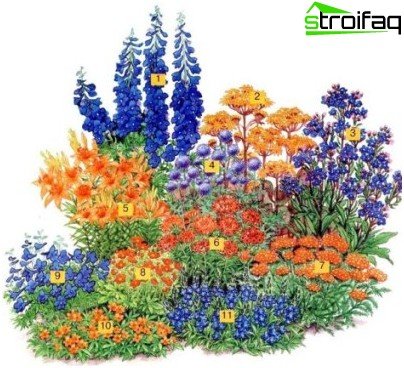
An example of a ready-made scheme of a spectacular flower garden from perennials (in a perspective view)
It should be borne in mind that beautiful greenery is often preferable to catchy flowers. For example, it is believed that foliage and grass should prevail in small flower gardens, then they look more profitable.
Other important points for planning
If the peak of the attractiveness of the flowerbed should reach in certain months, seasonal species of plants are used. In this case, planning a landing is much easier. For springtime, primroses and many bulbous ones are involved. Throughout the summer, annuals show off with inflorescences. There will also be representatives of the flora, perfect for autumn flower beds..
A different list of plants should include a continuous flowering flower scheme. Here you will need to use all groups of plants: bulb, annual and perennial. Bulbous with the advent of spring will dissolve the petals. Then, perennials that are luxurious but short-lived in flowering will begin to change. They will be complemented and shaded by annuals that successfully attract attention in the summer. It is also worth getting views with bright foliage and ornamental herbs..
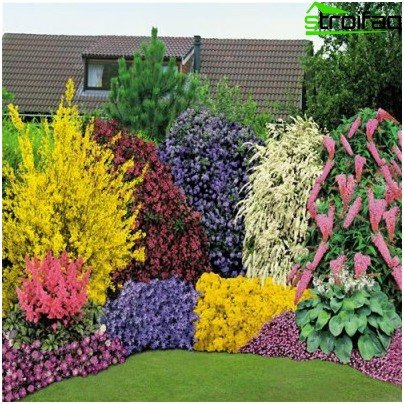
Perennial species look charming, but not blooming for long
When drawing up schemes and designs for flower beds, one must also remember such an important factor as the cost of planting materials. With a fairly modest project budget, you should not focus on expensive views. Of course, you can buy and plant one or a couple of valuable varietal bushes, hoping for their growth in the future. But, only after a year or two the area allotted for them will begin to play, will it begin to look full. Meanwhile, by planting a larger group of less expensive seedlings, the desired effect could be achieved almost immediately. Low cost does not mean that the flower bed will not be beautiful.
For example, seeds or planting stock of annual species may be relatively inexpensive. And the result is often admirable. Due to the long flowering period of such plants and their variety, flower garden patterns from annuals are becoming very popular today.
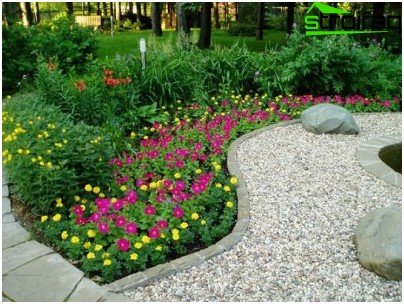
Annuals will provide long-term decorative
Paperwork completion
When finalizing the plan, the exact amount of planting material is calculated. They proceed from the size of the flower bed and the optimal distance between plants (for each species, it may vary). Be sure to consider the possibility of caring for the vegetation, its watering. And the fact that perennials will grow over the years, they need to leave a place for this (empty space can be filled with annuals for now).
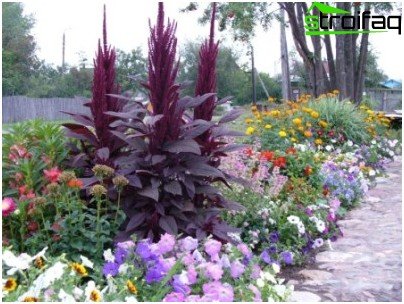
Planning a flowerbed of continuous flowering will allow you to enjoy the beauty of the opening view until late autumn
The finished scheme is again analyzed by altitude, composition, flowering time, ease of cultivation. Having determined that further adjustments are not needed, they proceed to the stage of implementing the developed layout already on the ground.


